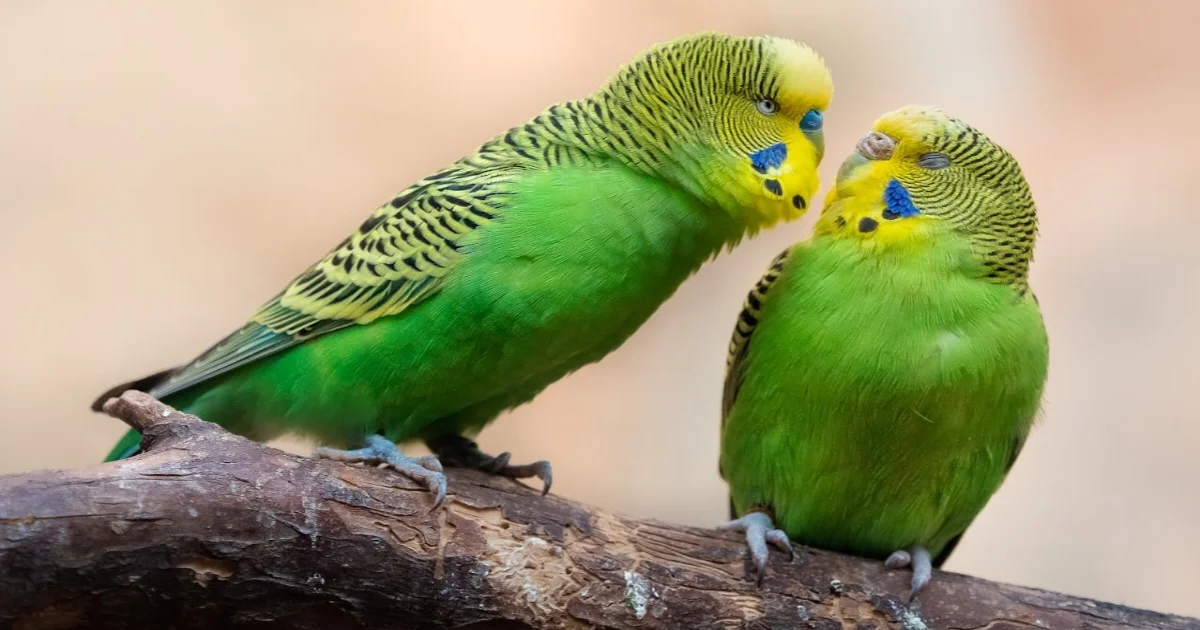Budgerigar
If you’ve ever been fascinated by small, colorful birds that chirp cheerfully and can mimic human speech, then you’ve probably encountered the…
If you’ve ever been fascinated by small, colorful birds that chirp cheerfully and can mimic human speech, then you’ve probably encountered the budgerigar, also known as the budgie or parakeet. These tiny parrots are more than just cute cage birds — they’re intelligent, social, and full of personality. In this post, we’ll dive into everything you need to know about budgerigars: from their origin and behavior to diet, care tips, and common myths.
What Is a Budgerigar?
The budgerigar (Melopsittacus undulatus) is a small parrot native to Australia. In the wild, they live in large flocks and travel great distances in search of food and water. Their natural color is green and yellow with black barring, but due to selective breeding, pet budgies now come in a wide range of colors including blue, white, grey, and even violet.
Quick Facts:
- Scientific Name: Melopsittacus undulatus
- Lifespan: 5 to 10 years (can exceed with proper care)
- Size: Around 7 inches (18 cm)
- Native Habitat: Arid regions of Australia
- Common Nickname: Budgie, parakeet
Why Budgerigars Make Great Pets
Budgies are the perfect bird for beginners and families for several reasons:
- Low maintenance compared to larger parrots
- Affordable to purchase and care for
- Highly intelligent, capable of learning words and tricks
- Friendly and social, especially when hand-tamed from a young age
- Compact size makes them ideal for small spaces
Whether you’re living in a city apartment or a house with a backyard, a budgie can fit right in.
Budgerigar Care Essentials
1. Cage Setup
Budgies need enough space to fly and climb. A cage should be at least 18x18x18 inches for one bird, with horizontal bars for climbing. Provide perches, toys, and swings to keep them active and mentally stimulated.
2. Diet
A balanced budgerigar diet includes:
- High-quality seed mix or pellets
- Fresh fruits and vegetables (e.g. carrots, spinach, apple slices — avoid avocado and chocolate)
- Clean, fresh water daily
Avoid feeding only seeds, as this can lead to obesity and nutritional deficiencies.
3. Health & Hygiene
- Keep the cage clean and dry.
- Trim nails when needed.
- Watch for signs of illness like fluffed feathers, lethargy, or changes in eating habits.
- Provide access to sunlight or a UVB lamp for vitamin D3.
4. Social Interaction
Budgies are flock animals and can become lonely if left alone for long periods. Either keep them in pairs or spend time daily talking, playing, and bonding with your bird.
Can Budgerigars Talk?
Yes! While not every budgie will speak, many can learn dozens — even hundreds — of words and phrases. Males are generally more vocal than females and may have a greater ability to mimic human speech. Consistent training, repetition, and bonding are key.
Breeding Budgerigars
If you’re considering breeding budgies, you’ll need:
- A bonded male and female
- A proper nesting box
- A quiet and safe environment
Budgies usually lay between 4 to 6 eggs, which hatch in about 18 days. However, breeding should only be done responsibly, with a plan for the care or rehoming of the chicks.
Final Thoughts
Budgerigars are charming, playful, and intelligent birds that can bring a lot of joy to your life. With the right care, attention, and love, a budgie can become a lifelong companion. Whether you’re a first-time pet owner or a seasoned bird enthusiast, adding a budgie to your home is a delightful experience.
Read More
References
1. Budgie Care Sheet – https://www.petmd.com/
2. Wikipedia – Budgerigar – https://en.wikipedia.org/
3. Talk Budgies Forum – https://www.talkbudgies.com/

